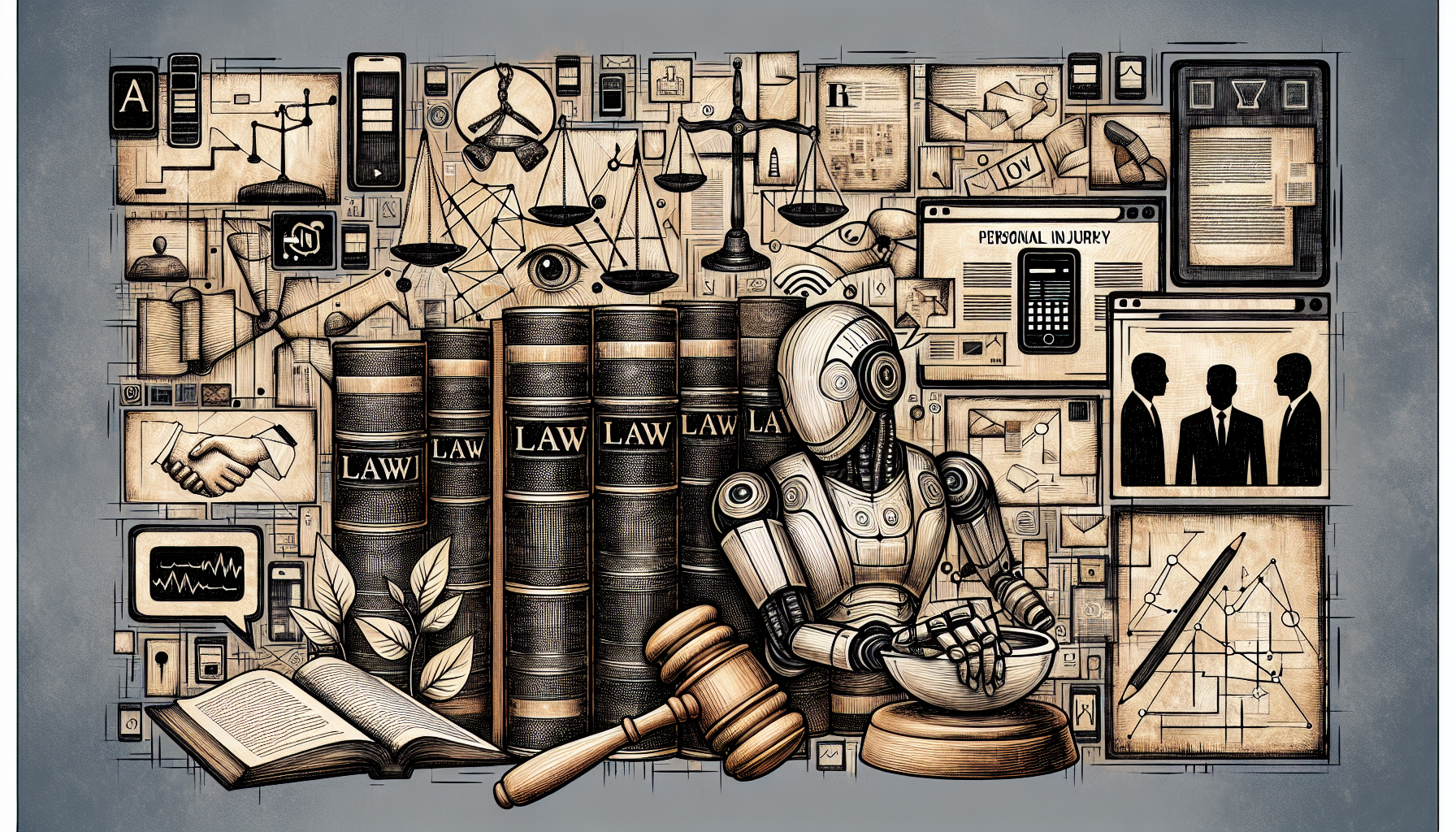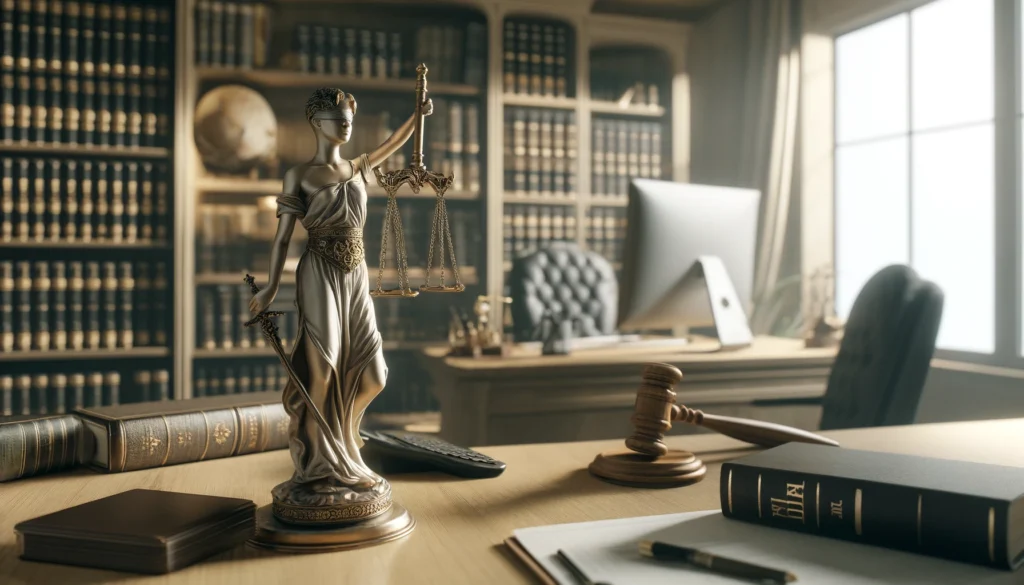
Harnessing the Power of AI in Forensic Legal Work
The integration of AI in legal work has revolutionized various aspects of legal practice. AI’s ability to process vast amounts of data swiftly and accurately offers an edge in tackling intricate forensic evidence challenges. The importance of forensic evidence in legal proceedings is well-recognized, often being pivotal in both prosecution and defense strategies. Yet, the complexities of analyzing and interpreting such evidence can prove daunting. Enter AI: a transformative tool for the forensic frontier in legal work.
Particularly, ChatGPT, an advanced language model, has shown promising potential in aiding legal professionals navigate the labyrinth of forensic evidence intricacies, enhancing accuracy, efficiency, and effectiveness.
Understanding Forensic Evidence and Its Legal Implications
Before delving into the integration of AI, it’s crucial to have a grasp of forensic evidence and its legal ramifications. Common types of forensic evidence include:
- DNA Analysis
- Fingerprint Identification
- Ballistics
- Bloodstain Pattern Analysis
- Digital Forensics
While forensic evidence can provide compelling support in legal cases, it is not without challenges. Issues such as errors in lab processes, contamination, and misinterpretation can undermine the reliability of evidence. Moreover, the technical nature of forensic evidence often requires expert testimony, which can introduce additional layers of complexity, including biases and inconsistency in expert opinions.
The legal implications are manifold. Incorrectly processed or interpreted evidence can lead to wrongful convictions or acquittals. Additionally, the evolving nature of forensic science means that legal professionals must continually update their knowledge base to effectively challenge or defend forensic evidence in court. This backdrop sets the stage for exploring the utility of AI, particularly ChatGPT, as a tool for streamlining forensic evidence-related tasks.
Also read:
ChatGPT: Your New Paralegal Assistant
ChatGPT, developed by OpenAI, is an advanced AI language model that can understand and generate human-like text based on the inputs it receives. Its capabilities extend to a wide array of legal tasks, making it an ideal paralegal assistant.
The advantages of employing ChatGPT include:
- Efficiency: Automates repetitive tasks, freeing up time for more complex legal work.
- Accuracy: Minimizes human error in documentation and research.
- Accessibility: Offers extensive legal information readily accessible.
By leveraging ChatGPT, legal professionals can streamline their workflows, particularly in areas requiring extensive data analysis and document preparation related to forensic evidence. This leads us to effectively integrating this tool into your daily practice.
Also read:
Setting Up for Success: Effective LLM Integration
To maximize ChatGPT’s potential, it’s essential to integrate it smoothly into your legal workflows. Here’s a step-by-step guide:
- Identify Needs: Determine specific tasks that would benefit from automation and AI input, such as document review, research, or drafting.
- Access Platform: Subscribe to a suitable version of ChatGPT that aligns with your law firm’s requirements.
- Initial Training: Train the AI by feeding it relevant legal documents and case files to optimize its understanding and response accuracy.
- Customize Settings: Adjust language models to cater to the specific jargon and requirements of forensic evidence analysis.
- Test Runs: Conduct preliminary tests to ensure accuracy and consistency in the outputs. Make adjustments as necessary.
Customizing settings allows you to create a more utility-centered AI tool. For instance, configuring prompt structures and setting response parameters can significantly reduce the time spent on iterative refinement of outputs. Thus, an optimal setup ensures that ChatGPT efficiently complements your workflow.
Also read:
Crafting the Perfect Prompts for Forensic Evidence Analysis
Accuracy and precision in queries directed to ChatGPT are paramount for obtaining useful outputs, especially when dealing with forensic evidence. Here are some techniques for writing effective prompts:
- Be Specific: Avoid vague questions; focus on particular elements of the forensic evidence you need analyzed.
- Contextualize: Provide sufficient background information to enable ChatGPT to generate contextually relevant responses.
- Seek Nuances: Ask about potential flaws or biases in the forensic process.
Consider these nuanced prompt examples:
- “Analyze the DNA evidence from case file X. Identify any potential issues with the evidence collection process.”
- “Review the chain of custody for the digital evidence in case Y. Highlight inconsistencies that could affect its admissibility.”
- “Examine the provided bullet trajectory analysis and suggest alternative interpretations that could support a self-defense claim.”
Directing ChatGPT to identify flaws or inconsistencies in evidence can involve prompts like:
- “List possible contamination sources in the bloodstain pattern analysis report for case Z.”
- “Identify biases that may be present in the fingerprint analysis methodology used in case A.”
Creating precise prompts not only ensures accurate outputs but also helps in uncovering critical insights, maximizing the utility of ChatGPT in forensic analysis.
Also read:
Streamlining Document Preparation and Review
ChatGPT significantly enhances the efficiency of legal document preparation and review, especially concerning forensic evidence. Here are best practices:
- Drafting: Use ChatGPT to create initial drafts of affidavits, motions, or reports that involve heavy reliance on forensic evidence; e.g., “Draft an affidavit summarizing the bloodstain pattern analysis in case B.”
- Reviewing: Employ ChatGPT for reviewing and suggesting improvements in forensic evidence-related documents to ensure clarity and correctness.
By cross-referencing ChatGPT’s draft with case specifics, legal professionals can ensure consistency and accuracy, reducing the chances of discrepancies or omissions. Regular feedback loops and iterative checks further hone the AI’s proficiency in aligning with requisite legal standards.
Also read:
Enhancing Legal Research with AI Assistance
AI can vastly improve the efficiency of conducting legal research, particularly in the context of forensic evidence. ChatGPT can assist by:
- Researching case laws: Input cases and scenarios to find relevant precedents and judicial interpretations concerning specific types of forensic evidence.
- Locating scholarly articles: Use strategic search prompts to pull pertinent academic papers that explore forensic methodologies or error rates.
Effective search examples include:
- “Find case law where fingerprint evidence was inadmissible due to procedural errors.”
- “Locate scholarly articles discussing the reliability of digital forensics in criminal cases.”
Utilizing these strategies facilitates in-depth and comprehensive legal research, empowering attorneys to build robust arguments and stay informed of the latest forensic science developments.
Also read:
Ethical Considerations and Reliability
While AI offers notable advantages, ethical considerations must not be overlooked. Ensuring the ethical use of AI entails:
- Transparency: Clearly communicate the involvement of AI in evidence analysis and document preparation.
- Validation: Continuously validate the AI outputs against human expertise and legal standards to ensure reliability.
Maintaining rigorous oversight and ethical practices will safeguard the integrity and validity of AI-assisted legal work.
Also read:
Conclusion: The Future of Forensic Evidence Challenges
Leveraging ChatGPT for forensic evidence challenges presents a plethora of benefits, from streamlined workflows to enhanced research and document accuracy. As AI technologies continue to evolve, the landscape of legal work will be progressively enriched, driving more effective and efficient handling of forensic evidence complexities.


